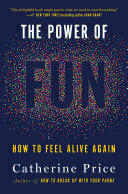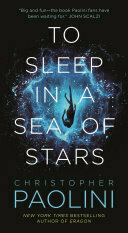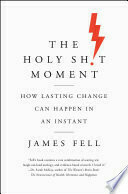Takeaways from "Deep Work"
Finished reading: Deep Work: Rules for Focused Success in a Distracted World by Cal Newport 📚
One of the main obstacles to doing deep work is the urge to turn your attention toward something more superficial.
A 2012 study, led by psychologists Wilhelm Hofmann and Roy Baumeister found that people fight desires all day long; the lure of the Internet and television proved especially strong -their subjects succeeded in resisting these particularly addictive distractions only around half the time.
“The key to developing a deep work habit is to move beyond good intentions and add routines and rituals to your working life designed to minimize the amount of your limited willpower necessary to transition into and maintain a state of unbroken concentration.”
Decide on Your Depth Philosophy
-
Monastic: avoid all distractions constantly (see: Neal Stephenson)
-
Bimodal: divide time with defined stretches of deep work; the balance for everything else
-
Rhythmic: daily or weekly regular habit of dedicated time
-
Journalistic: fit deep work whenever you can
Ritualize your approach based on your philosophy. Location, environment are key.
The 4 Disciplines of Execution
-
Focus on the Wildly Important: Identify goals, and measure success
-
Act on the Lead Measures: Hours spent working deeply, for instance
-
Keep a Compelling Scoreboard
-
Create a Cadence of Accountability: Weekly review
Be Lazy - ensure adequate time for unstructured rest time that allows your unconcious mind to sort through your deep work. directed attention is a finite resource; if you exhaust it, you will struggle to concentrate. Rest allows you to replenish attention.
“…for a novice, somewhere around an hour a day of intense concentration seems to be a limit, while for experts this number can expand to as many as four hours—but rarely more.”
“To succeed with this strategy, you must first accept the commitment that once your workday shuts down, you cannot allow even the smallest incursion of professional concerns into your field of attention. This includes, crucially, checking e-mail, as well as browsing work-related websites.”
Don’t Take Breaks from Distraction. Instead Take Breaks from Focus. Schedule in advance when you will use the Internet, and then avoid it altogether outside these times.
Work like Teddy Roosevelt. Estimate how long you would normally put aside for a deep work goal, then give yourself a hard deadline that drastically reduces this time. At this point, there should be only one possible way to get the deep task done in time: working with great intensity—no e-mail breaks, no daydreaming, no Facebook browsing, no repeated trips to the coffee machine.
Meditate Productively: Think in a structured fashion while walking or some other physical “autopilot” activity.
Memorize a Deck of Cards: intensive memory development improves cognitive performance across the board, particularly directed attention. Practice using a deck of cards, utilizing the “remember scenes” approach:
“To prepare for this high-volume memorization task, White recommends that you begin by cementing in your mind the mental image of walking through five rooms in your home. The second step in preparing to memorize a deck of cards is to associate a memorable person or thing with each of the fifty-two possible cards. To make this process easier, try to maintain some logical association between the card and the corresponding image. White provides the example of associating Donald Trump with the King of Diamonds, as diamonds signify wealth. Practice these associations until you can pull a card randomly from the deck and immediately recall the associated image. Once you can easily recall this mental walkthrough of a well-known location, fix in your mind a collection of ten items in each of these rooms. White recommends that these items be large (and therefore more memorable), like a desk, not a pencil. Next, establish an order in which you look at each of these items in each room. For example, in the front hallway, you might look at the entry mat, then shoes on the floor by the mat, then the bench above the shoes, and so on. Combined this is only fifty items, so add two more items, perhaps in your backyard, to get to the full fifty-two items you ill later need when connecting these images to all the cards in a standard deck. Once these steps are done, you ire ready for the main event: memorizing as quickly as possible the order of fifty-two cards in a freshly shuffled deck. The method here is straightforward. Begin your mental walk-through of your house. As you encounter each item, look at the next card from the shuffled deck, and imagine the corresponding memorable person or thing doing something memorable near that item.”
Quit Social Media. Utilize the Craftsman Approach to Tool Selection, if a network adds significant value, keep it; otherwise ditch it.
Structure activities around the Law of the Vital Few: similar to 80/20 power law - invest in the highest-return activities vs. the balance of the rest.
Don’t Use the Internet to Entertain Yourself
“Put more thought into your leisure time. In other words, this strategy suggests that when it comes to your relaxation, don’t default to whatever catches your attention at the moment, but instead dedicate some advance thinking to the question of how you want to spend your “day within a day”
“If you give your mind something meaningful to do throughout all your waking hours, you will end the day more fulfilled, and begin the next one more relaxed, than if you instead allow your mind to bathe for hours in semiconscious and unstructured Web surfing.”
Drain the Shallows: to the extent possible, eliminate meetings, non-productive activities in favor of investment in the 20% of activities that move you towards your goals.
Schedule Every Minute of Your Day.
“A commitment to deep work is not a moral stance and it is not a philosophical statement—it is instead a pragmatic recognition that the ability to concentrate is a skill that gets valuable things done.”


